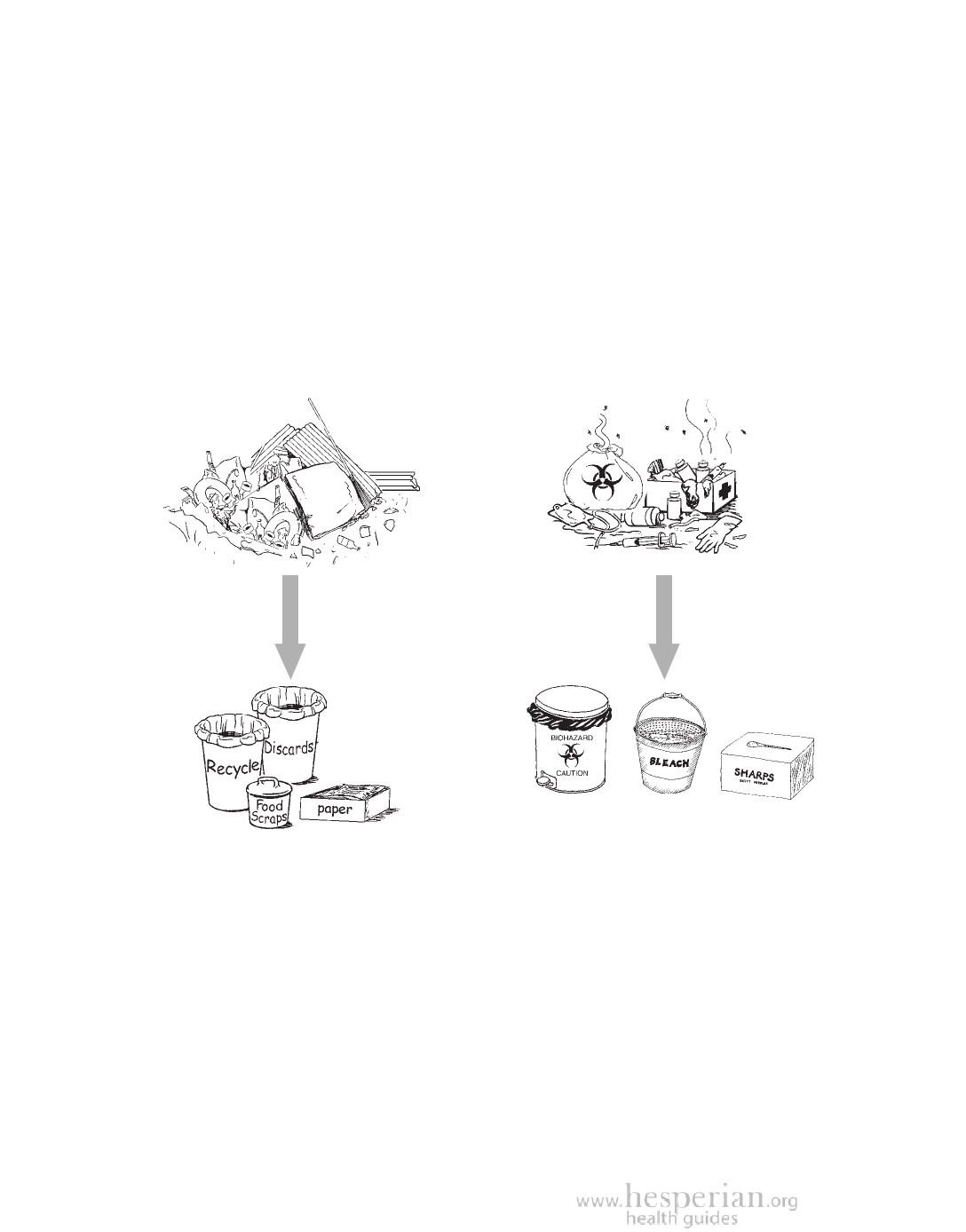
426 Health Care Waste
Separating waste into colored containers
Many health centers separate wastes into different colored containers at
the places where waste is created. For this to be a useful method, everyone
in the health center needs to understand which waste goes into which color
container. Different countries use different colors for each type of waste.
For example, in some countries the color red means “danger.” So containers
for used needles and other sharp tools, and other harmful or toxic wastes are
red or marked with red paint, marker, or tape.
More than half of all waste from health centers is just like household waste:
paper, cardboard, bottles, cans, and kitchen scraps. When this waste is separated
out, it is much easier to manage the harmful waste.
Regular waste can be put into bags and
bins and, as much as possible, recycled,
turned into compost, or reused.
Harmful waste should be
separated and treated carefully
(see chart on page 436).
Containers should be:
• placed close to where waste is created.
• clearly marked with colors and symbols.
• strong enough so they do not leak or break.
• easy to seal and transport without risk of spills, leaks, or breaks.
• big enough to hold a full day’s waste when only ³∕₄ full.
It is best to use containers and bags that are the same color for the same kind
of waste. If this is not possible, mark them with colored tape or paint. Always
using the same colors can help workers who do not read — and even those
who do — remember which containers are for regular waste and which are for
harmful wastes.
A Community Guide to Environmental Health 2012